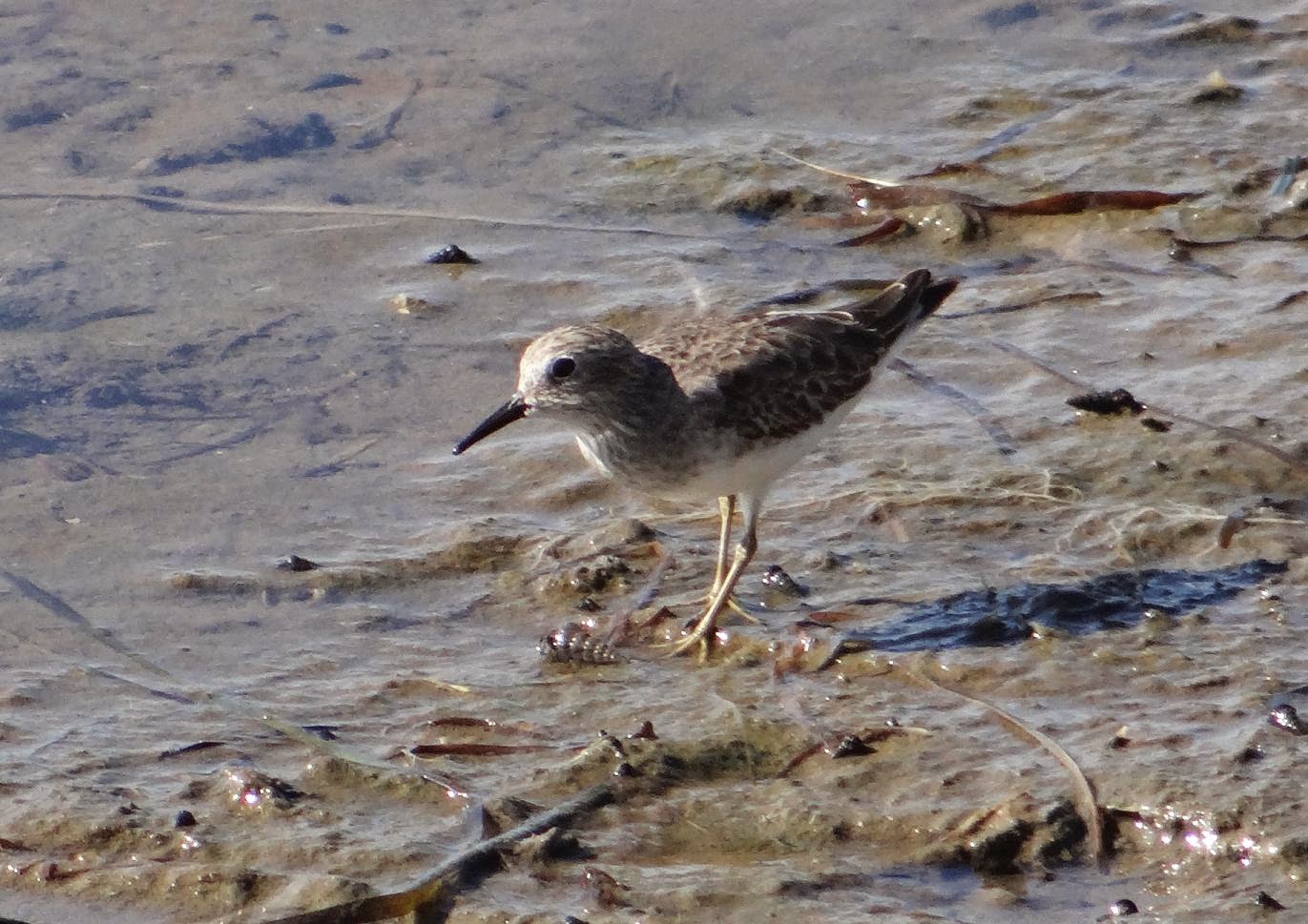Whales, dolphins, sea lions, flying fish and numerous pelagic birds such as Black-footed Albatross, Brown Booby, Black-vented Shearwater and Arctic Tern are a few of the magnificent creatures that you have a chance to see in their natural setting if you spend the day out on the ocean.
You need to be willing to get up super early. I thought birders were the earliest risers. Not so! When we lined up to board the 85ft ship for a day at sea before dawn, fishermen had already unloaded their catch for the day. The fish were lined up, weighed and photos were being taken of prized trophy fish.
Before living in California, I had never gone on a Pelagic birding trip. Living in the mountains surrounded by deserts is great but I do miss the ocean so I jumped at the chance to join a birding trip on the ocean at the recent Western Field Ornithologist conference.
Some birds can be only seen if you go out to sea. The goal of these types of trips is to see Pelagic birds that live far off the coast. All other sightings are a bonus. Be forewarned, you may get a "gift" from a seagull overhead which happened to me immediately or you may get seasick if there are lots of waves and unpleasant smells. Fortunately, we were all spared from that unpleasant experience.
 |
| Black-vented Shearwater |
|
|
 |
| Black-footed Albatross |
|
|
|
The Black-vented Shearwater, Arctic Tern, Brown Booby and huge Black-footed Albatross came close enough to the boat to get a close look. Most of what I saw is captured in memory only since it is incredibly difficult to get photos of fast moving birds aboard a moving boat. There were unexpected surprises as well.
Sea Lions lounging on the buoy were pretty easy to photograph but there were other moments that were only captured in my mind.
Seeing a Hump-backed whale shoot its entire body like a rocket followed by white foamy waves after his reentry into the water is something I'll never forget. Another is the Flying fish which unexpectedly propels its body at top speed above the surface of the water for several feet before disappearing into the deep blue water. A pod of at least 30 grey and white dolphins playfully followed alongside the boat for a brief exciting period of time before leaving us.
Of all these memorable experiences, one chance encounter will stand out. A tiny Ruby-crowned Kinglet lost his navigation during his migration journey. These little birds do not normally cross huge bodies of water. He found our boat about 20 miles off the coast and flew into the cabin above the deck where the pilot and leader of the trip were guiding our ship.
This little bird was lucky because it had landed on board a boat full of kind hearted people including a few with experience handling birds.The kinglet was fed water on the edge of a popsicle stick. He reluctantly relented and drank some drops of water before resting in a discarded lunch box that we used as a makeshift cage until we returned to land. He survived the 6 hour return journey and was placed in the cover of a shrub where he had a second chance of life.
 |
| Sunset at Point Loma |
It was an amazing day! Being able to view pelagic birds that can only be seen from the ocean, whales defying gravity with their propulsion above the water, fish shooting themselves across the surface of the water and the survival of a lost songbird were incredible experiences.
 |
| Brown Pelican |
If you get the opportunity, I highly recommend it! Remember to watch out for overhead seagulls dropping gifts!












































